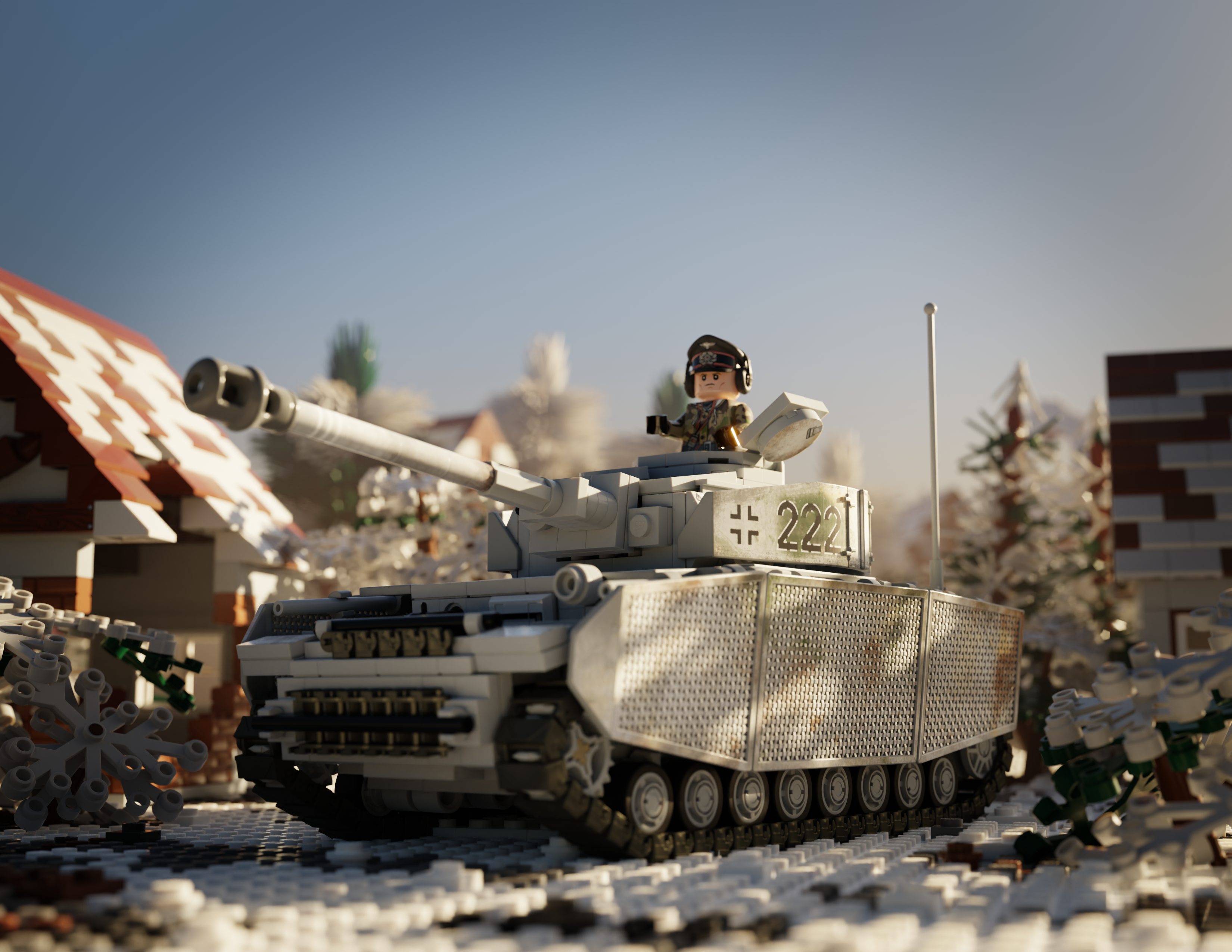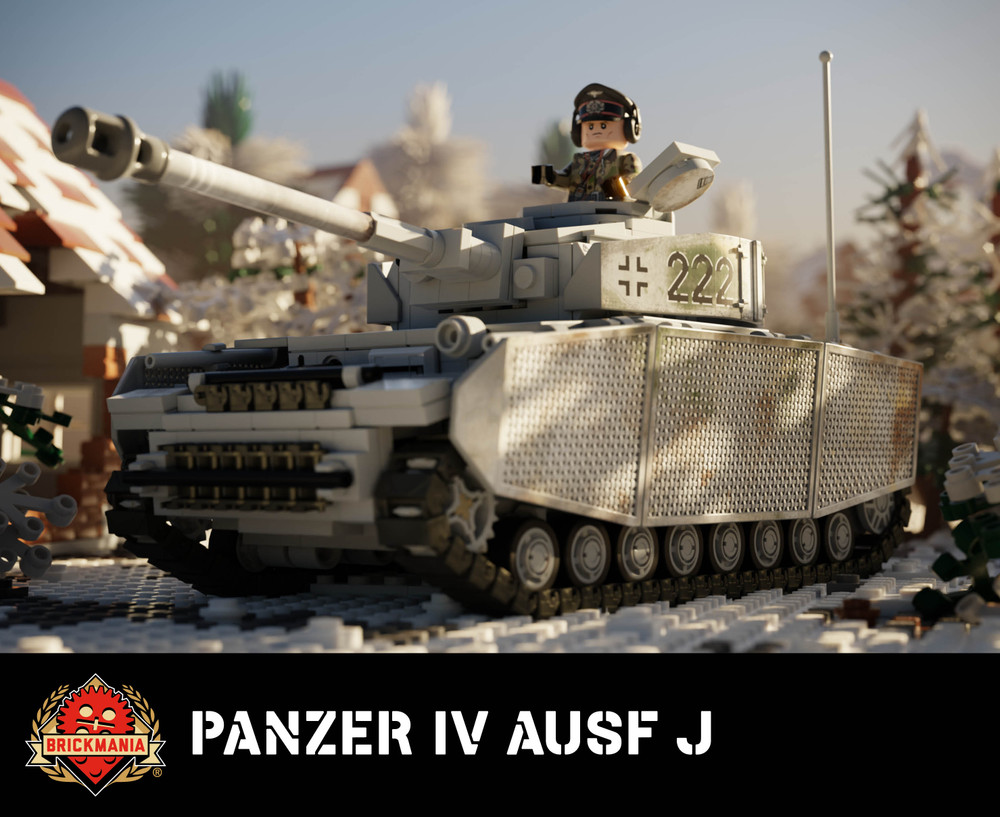About the Panzer IV Ausf J – Winter Camouflage:
The Panzer IV was Germany’s workhorse tank of World War II. Its initial design began in the 1930s with the prototype model reaching production in 1936. As part of Germany’s experimentation of Blitzkrieg tactics in the Spanish Civil War (1936-1939), German strategy viewed the Panzer IV as an infantry support weapon. The Panzer III—the IV’s smaller brethren—was to be used for anti-tank combat with the IV working in tandem to fend off infantry attack. The Panzer IV’s short and stubby 75mm gun was perfect for aiding in firefights and it excelled at knocking out fortifications and infantry installments. However, as the German’s fought in Poland and France, the IV exemplified itself as an effective tank killer. Moreover, the tank’s short 75mm gun and rather thin-for-its-size frontal armor were short comings that needed to be addressed. By 1942 the continuation of the Panzer IV appeared as the F2 model, with upgraded armor thickness and gun that was changed out to the longer 7.5cm KwK 40 L/43 model. This upgrade transitioned the Panzer IV’s role into a tank fighter. Panzer IV tanks fought valiantly through the entirety of World War II and saw extensive combat along the Eastern Front, North Africa, and in the aftermath of D-Day.
The Panzer IV was the only tank continually built throughout the entirety of the war by Germany. In fact, the tank was also Germany’s most prolifically built, with over 8,500 made—though that pales in comparison to the Allies’ Sherman and T-34 tanks. The Ausf J model entered service toward the end of 1944, was built at the Nibelungenwerk (Ni-Werk) factory in Sankt Valentin, Austria and was the last variant produced.Through constant engineering changes, the Panzer IV Ausf J hardly looked like the original F1 model that swept across Europe. Many modernizations included upgraded armor and gun, a streamlined manufacturing process, and a more efficient use of raw materials—which were beginning to wane. Like all other Panzer IVs, the J model utilized a crew of five—commander, gunner, loader, driver, and radio operator. Each member communicated via the FuG 2 radio, something that the Allies lacked for much of the war. Another commonality between the J model and its predecessors was the inclusion of the venerable Maybach engine. It was a 11.9L V-12 gasoline engine that pushed 265hp and had a trusted track record. Also noteworthy was the addition of mesh armor panels on the exterior of the tank instead of the more costly and resource intense schurzen. The mesh skirts were for protection against Soviet RPG-43 and American Bazookas. The J models were used in the last efforts to defend the Third Reich from the onslaught of the Allies. Many were destroyed as the noose tightened around Berlin. Adam Makos in Spearhead gives a very detailed account of how Germany used the Panzer IV in combat, especially near the end of the war. While the Panzer IV Ausf J was the pillar of the German’s Panzer corp, like many things in the Third Reich, there were far too few to fend off the might of the Allied attack.

Additional information about this Brickmania® custom building kit:
This long-awaited update features 16x new custom created elements and loaded with custom printing, the new Panzer IV in winter camo promises to be the most premium Panzer IV ever released by Brickmania! There are no stickers slated for this kit and you can add up to 2x crewman in addition to the commander included with the build.
Model Statistics:
Designed by Daniel Siskind
723 LEGO®, Brickmania® & BrickArms® elements
1x custom minifig
Custom printed elements
Full-color printed building instructions
1/35th scale to match other Brickmania kits
Advanced Skill Level (6-8 years building experience recommended)
Hear more about this creation on Brickmania's Designer's Studio YouTube channel:
All Brickmania® model kits are made of new-condition LEGO® bricks. This model comes disassembled and includes complete printed building instructions. This is a limited-edition kit and production may be discontinued at any time.
This is not a LEGO® Product. LEGO and the LEGO minifigure are trademarks of the LEGO Group, which does not sponsor, authorize, or endorse this product. The LEGO Group is not liable for any loss, injury or damage arising from the use or misuse of this product.












